-
 This Land is Our Land Inquiry Unit: "How did (does) Europeans’ view of land impact their (our) relationship and interactions with Indigenous peoples?"
This Land is Our Land Inquiry Unit: "How did (does) Europeans’ view of land impact their (our) relationship and interactions with Indigenous peoples?" SOCIAL STUDIES:
3 – H3.0.5 Use informational text and visual data to compare how Indigenous Peoples and non-Indigenous Peoples in the early history of Michigan interacted with, adapted to, used, and/or modified their environments.
-
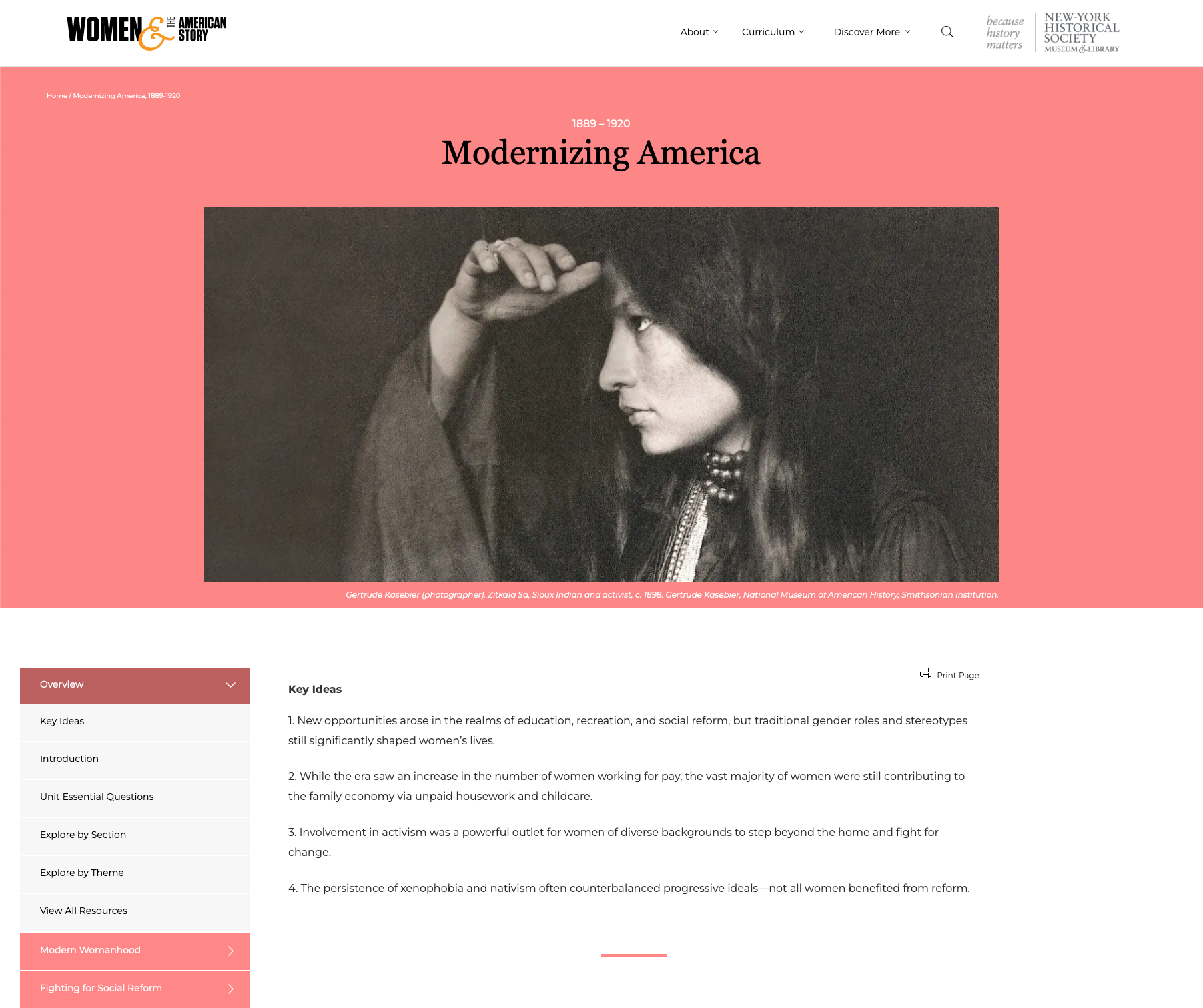 Modernizing America: Women and the American Story History Unit (1889–1920)
Modernizing America: Women and the American Story History Unit (1889–1920) Content wise, this unit goes best with 8th grade and High School USHG Era 6. There are opportunities for geography, economics, and civics integration. Which standards are best will depend on the resources you include, how you include them, and the grade you teach. That said, we do recommend these resources for all grades to help develop historical thinking and inquiry skills described in the K - 12 standards.
-
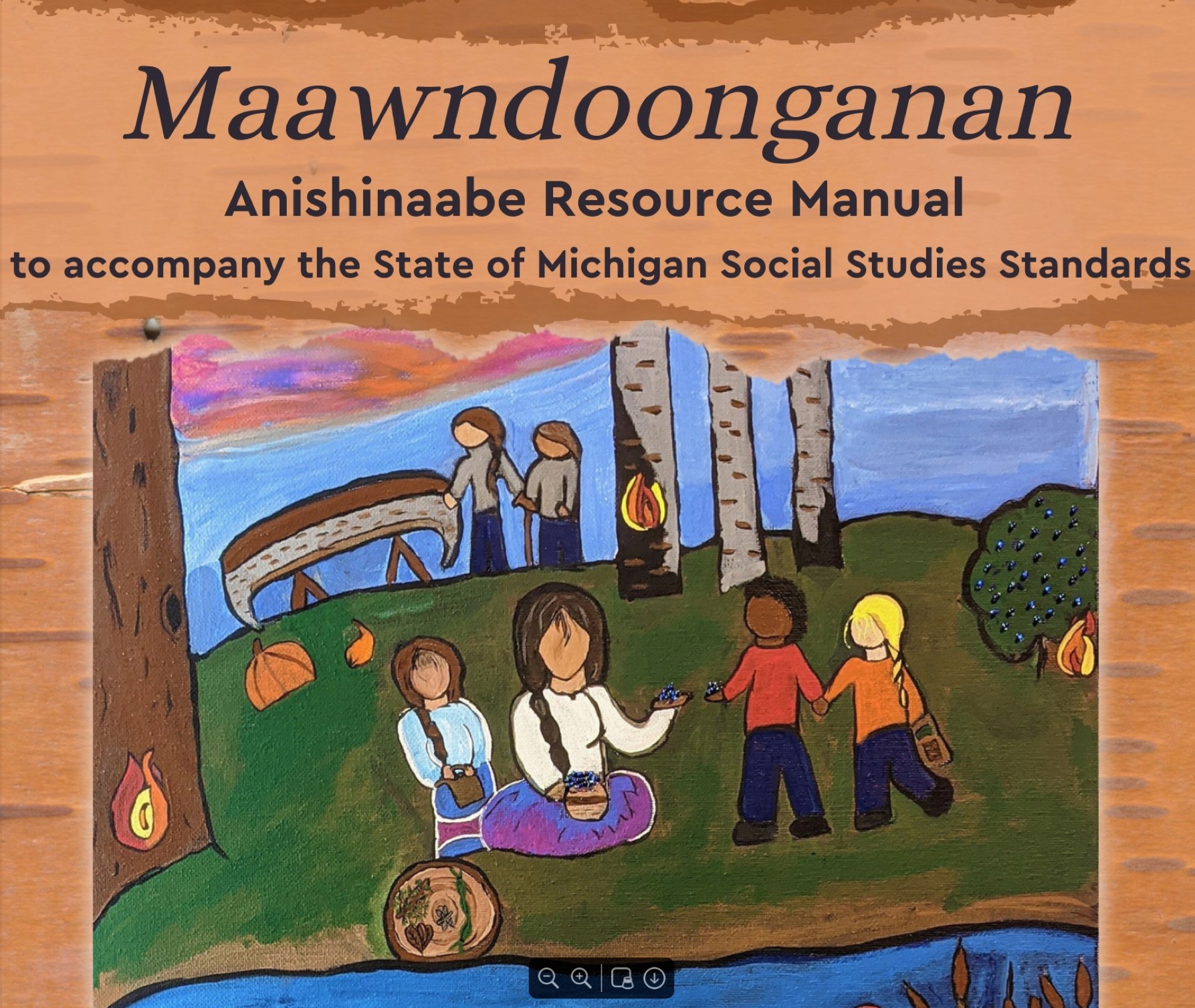 Maawndoonganan: Anishinaabe Resource Manual to Accompany the State of Michigan Social Studies Standards
Maawndoonganan: Anishinaabe Resource Manual to Accompany the State of Michigan Social Studies Standards K-12 applicable. Content expectation alignment is found within the document.
-
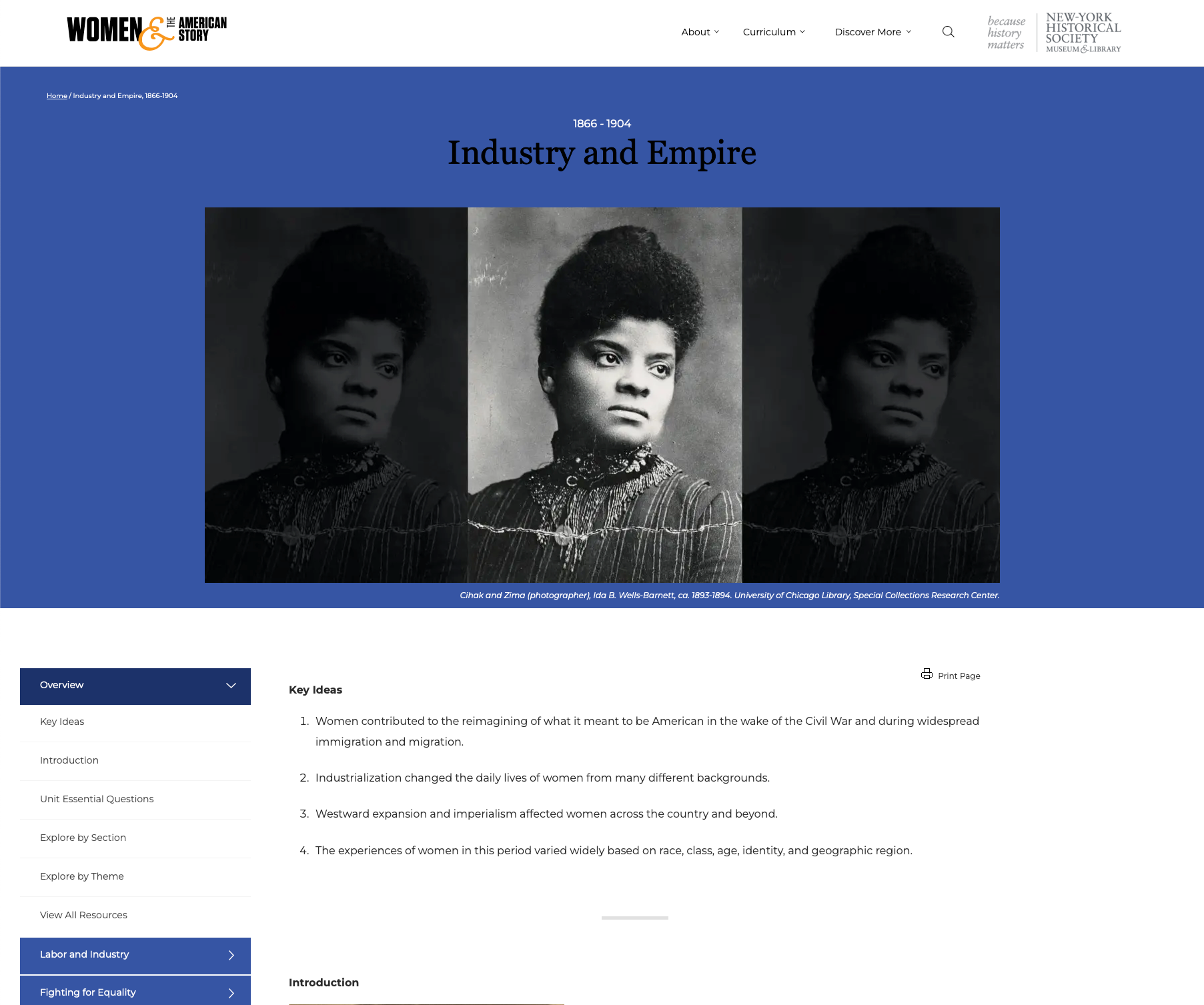 Industry and Empire: Women and the American Story History Unit (1866-1904)
Industry and Empire: Women and the American Story History Unit (1866-1904) Content wise, this unit goes best with 3rd and 4th grade history, 8th grade USHG Eras 5 + 6 and High School USHG Era 6. There are opportunities for geography, economics, and civics integration. Which standards are best will depend on the resources you include, how you include them, and the grade you teach. That said, we do recommend these resources for all grades to help develop historical thinking and inquiry skills described in the K - 12 standards.
-
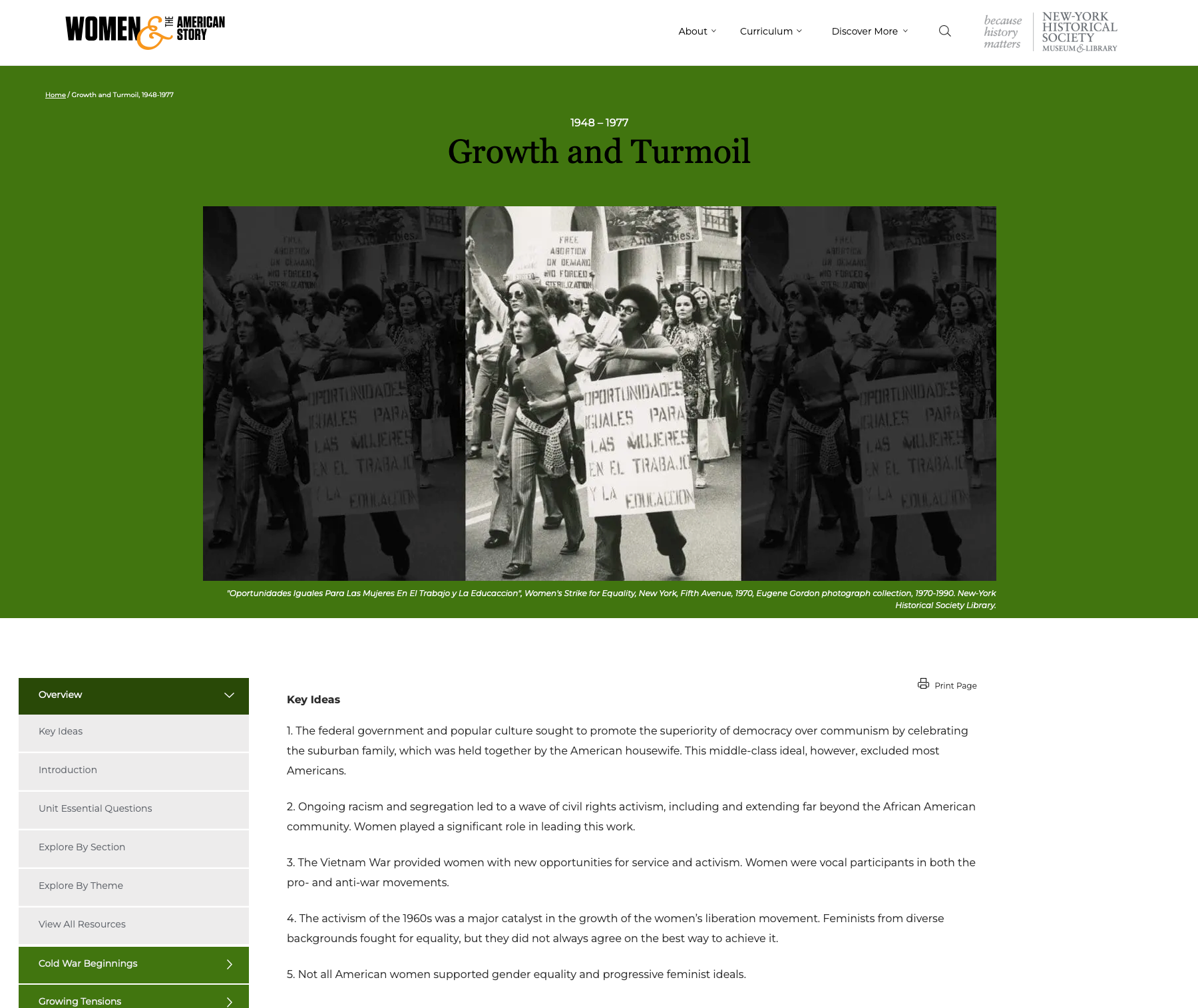 Growth and Turmoil: U.S. History Unit (1948–1977)
Growth and Turmoil: U.S. History Unit (1948–1977) Content wise, this unit goes best with High School USHG Eras 7 + 8. There are opportunities for geography, economics, and civics integration.
-
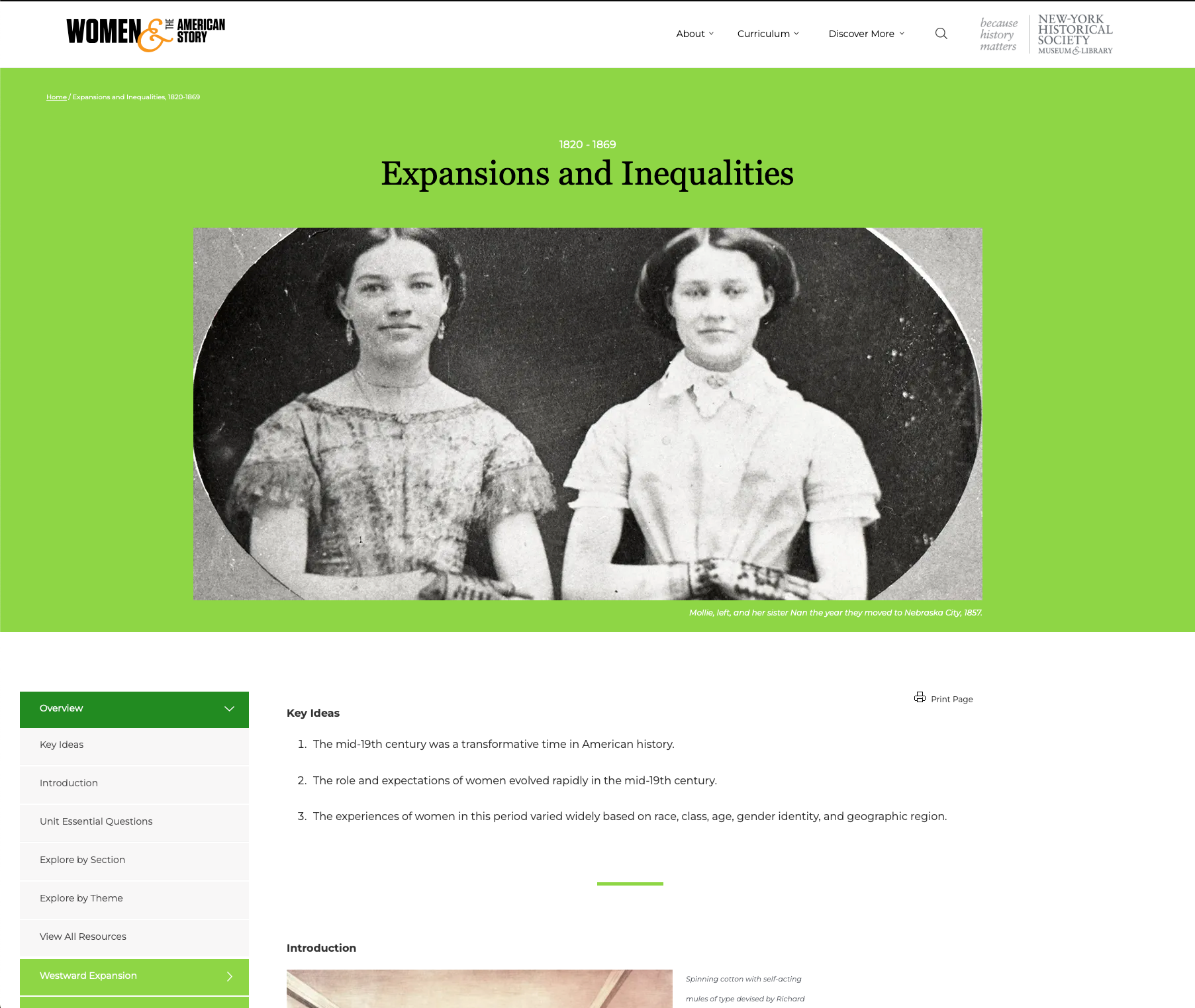 Expansions and Inequalities: Women and the American Story History Unit (1820-1869)
Expansions and Inequalities: Women and the American Story History Unit (1820-1869) Content wise, this unit goes best with 8th grade USHG Eras 4 + 5. There are opportunities for geography, economics, and civics integration. Which standards are best will depend on the resources you include, how you include them, and the grade you teach. That said, we do recommend these resources for all grades to help develop historical thinking and inquiry skills described in the K - 12 standards.
-
 End of the Twentieth Century Women and the American Story History Unit (1977-2001): A Conservative Turn
End of the Twentieth Century Women and the American Story History Unit (1977-2001): A Conservative Turn Content wise, this unit goes best with High School USHG Eras 8+ 9. There are opportunities for geography, economics, and civics integration. Which standards are best will depend on the resources you include, how you include them, and the grade you teach. That said, we do recommend these resources for all grades to help develop historical thinking and inquiry skills described in the K - 12 standards.
-
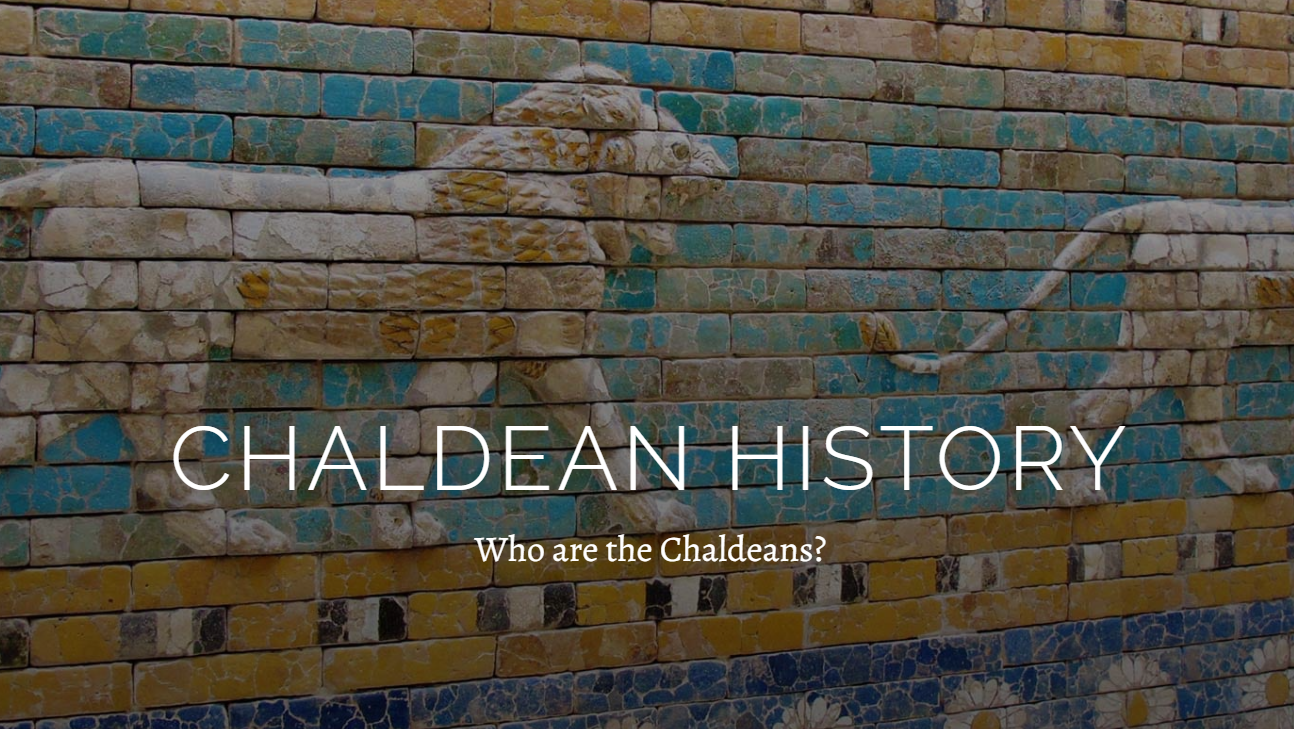 Chaldean History: Who are the Chaldeans?
Chaldean History: Who are the Chaldeans? A brief article outlining the over 5,500-year history of Chaldean people: from their beginnings in Mesopotamia to Metro Detroit becoming the second largest community of Chaldeans worldwide.
The article also includes information about language, religion, and demographics.
-
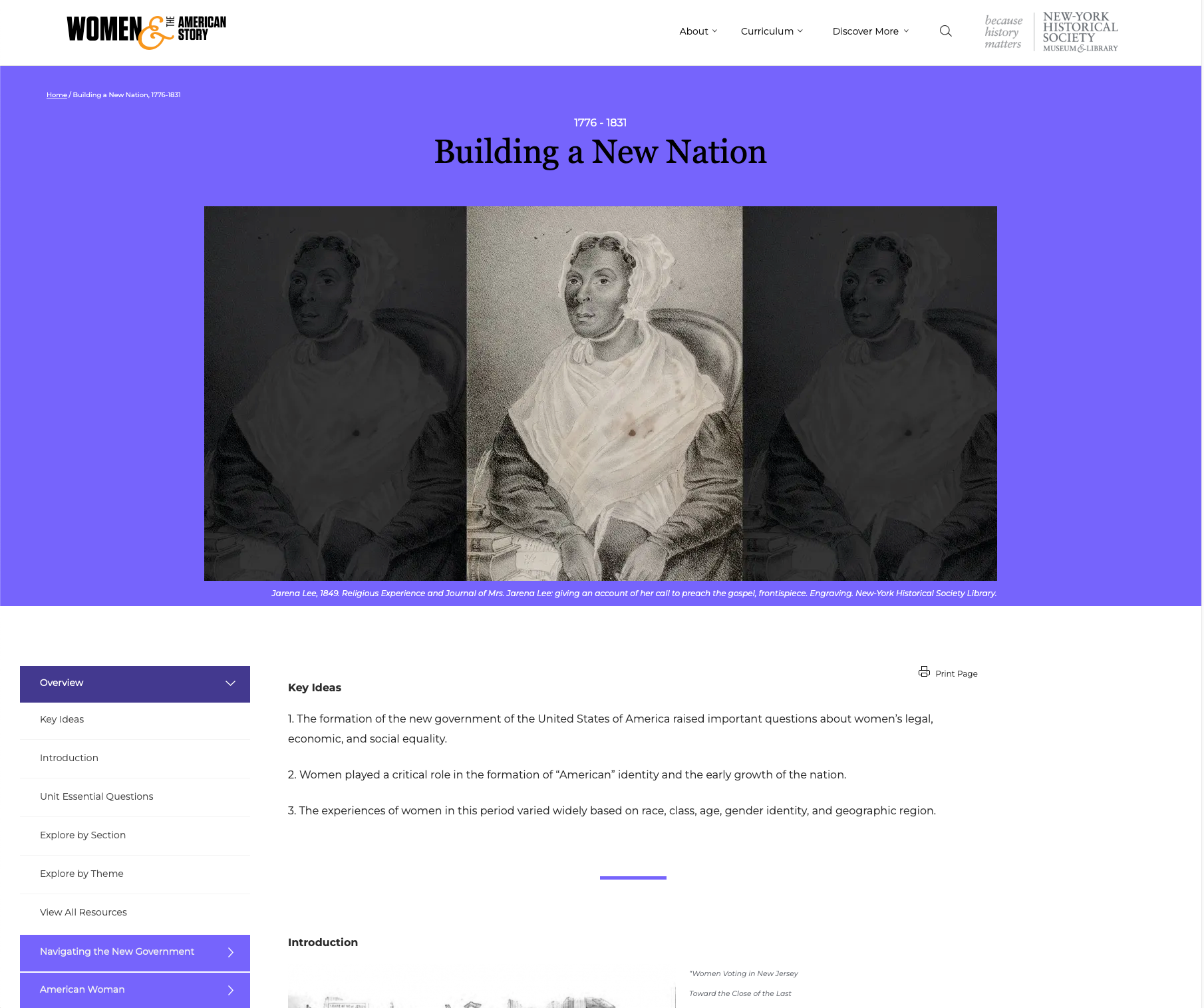 Building a New Nation: Women and the American Story History Unit (1776-1831)
Building a New Nation: Women and the American Story History Unit (1776-1831) Content wise, this unit goes best with 3rd Grade history and 5th grade USHG Era 3 and 8th grade USHG Eras 3 + 4. There are opportunities for geography, economics, and civics integration.
Which standards are best will depend on the resources you include, how you include them, and the grade you teach. That said, we do recommend these resources for all grades to help develop historical thinking and inquiry skills described in the K - 12 standards.
-
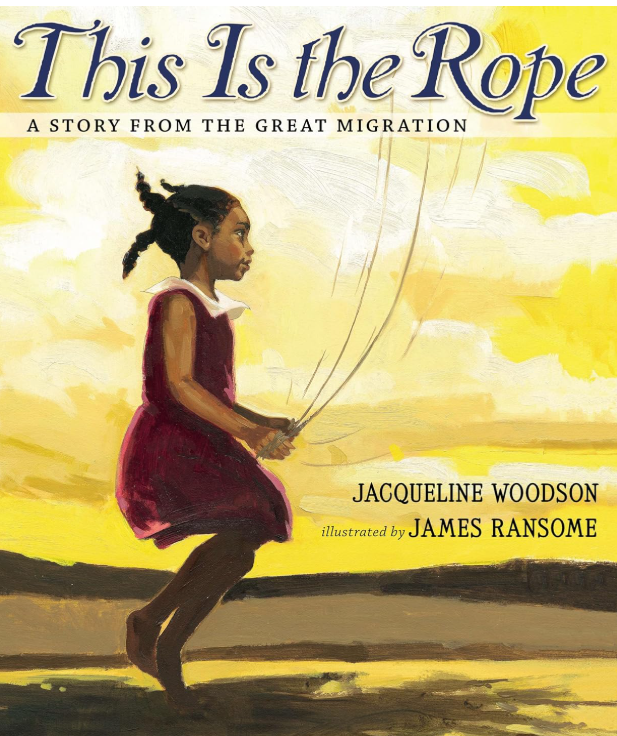 Big Moves: This is the Rope Read Aloud
Big Moves: This is the Rope Read Aloud 1-H2.0.2: Investigate a family history for at least two generations, identifying various members and their connections in order to tell a narrative about family life.
-
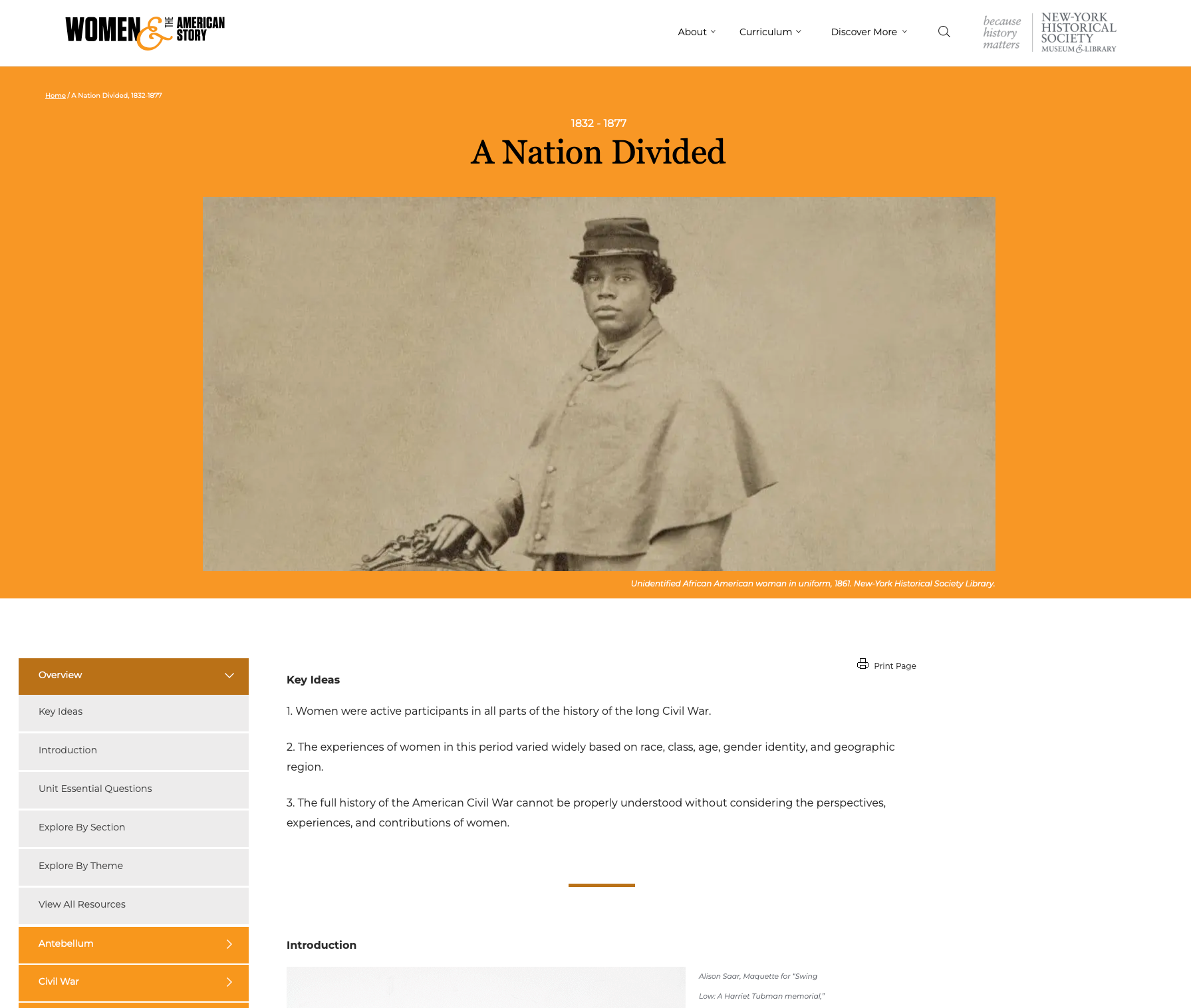 A Nation Divided: U.S. History Unit (1832-1877)
A Nation Divided: U.S. History Unit (1832-1877) Content wise, this unit goes best with 5th grade USHG Era 3 and 8th grade USHG Eras 4 + 5. There are opportunities for geography, economics, and civics integration. Which standards are best will depend on the resources you include, how you include them, and the grade you teach. That said, we do recommend these resources for all grades to help develop historical thinking and inquiry skills described in the K - 12 standards.
 This Land is Our Land Inquiry Unit: "How did (does) Europeans’ view of land impact their (our) relationship and interactions with Indigenous peoples?" SOCIAL STUDIES: 3 – H3.0.5 Use informational text and visual data to compare how Indigenous Peoples and non-Indigenous Peoples in the early history of Michigan interacted with, adapted to, used, and/or modified their environments.
This Land is Our Land Inquiry Unit: "How did (does) Europeans’ view of land impact their (our) relationship and interactions with Indigenous peoples?" SOCIAL STUDIES: 3 – H3.0.5 Use informational text and visual data to compare how Indigenous Peoples and non-Indigenous Peoples in the early history of Michigan interacted with, adapted to, used, and/or modified their environments. Modernizing America: Women and the American Story History Unit (1889–1920) Content wise, this unit goes best with 8th grade and High School USHG Era 6. There are opportunities for geography, economics, and civics integration. Which standards are best will depend on the resources you include, how you include them, and the grade you teach. That said, we do recommend these resources for all grades to help develop historical thinking and inquiry skills described in the K - 12 standards.
Modernizing America: Women and the American Story History Unit (1889–1920) Content wise, this unit goes best with 8th grade and High School USHG Era 6. There are opportunities for geography, economics, and civics integration. Which standards are best will depend on the resources you include, how you include them, and the grade you teach. That said, we do recommend these resources for all grades to help develop historical thinking and inquiry skills described in the K - 12 standards. Maawndoonganan: Anishinaabe Resource Manual to Accompany the State of Michigan Social Studies Standards K-12 applicable. Content expectation alignment is found within the document.
Maawndoonganan: Anishinaabe Resource Manual to Accompany the State of Michigan Social Studies Standards K-12 applicable. Content expectation alignment is found within the document. Industry and Empire: Women and the American Story History Unit (1866-1904) Content wise, this unit goes best with 3rd and 4th grade history, 8th grade USHG Eras 5 + 6 and High School USHG Era 6. There are opportunities for geography, economics, and civics integration. Which standards are best will depend on the resources you include, how you include them, and the grade you teach. That said, we do recommend these resources for all grades to help develop historical thinking and inquiry skills described in the K - 12 standards.
Industry and Empire: Women and the American Story History Unit (1866-1904) Content wise, this unit goes best with 3rd and 4th grade history, 8th grade USHG Eras 5 + 6 and High School USHG Era 6. There are opportunities for geography, economics, and civics integration. Which standards are best will depend on the resources you include, how you include them, and the grade you teach. That said, we do recommend these resources for all grades to help develop historical thinking and inquiry skills described in the K - 12 standards. Growth and Turmoil: U.S. History Unit (1948–1977) Content wise, this unit goes best with High School USHG Eras 7 + 8. There are opportunities for geography, economics, and civics integration.
Growth and Turmoil: U.S. History Unit (1948–1977) Content wise, this unit goes best with High School USHG Eras 7 + 8. There are opportunities for geography, economics, and civics integration. Expansions and Inequalities: Women and the American Story History Unit (1820-1869) Content wise, this unit goes best with 8th grade USHG Eras 4 + 5. There are opportunities for geography, economics, and civics integration. Which standards are best will depend on the resources you include, how you include them, and the grade you teach. That said, we do recommend these resources for all grades to help develop historical thinking and inquiry skills described in the K - 12 standards.
Expansions and Inequalities: Women and the American Story History Unit (1820-1869) Content wise, this unit goes best with 8th grade USHG Eras 4 + 5. There are opportunities for geography, economics, and civics integration. Which standards are best will depend on the resources you include, how you include them, and the grade you teach. That said, we do recommend these resources for all grades to help develop historical thinking and inquiry skills described in the K - 12 standards. End of the Twentieth Century Women and the American Story History Unit (1977-2001): A Conservative Turn Content wise, this unit goes best with High School USHG Eras 8+ 9. There are opportunities for geography, economics, and civics integration. Which standards are best will depend on the resources you include, how you include them, and the grade you teach. That said, we do recommend these resources for all grades to help develop historical thinking and inquiry skills described in the K - 12 standards.
End of the Twentieth Century Women and the American Story History Unit (1977-2001): A Conservative Turn Content wise, this unit goes best with High School USHG Eras 8+ 9. There are opportunities for geography, economics, and civics integration. Which standards are best will depend on the resources you include, how you include them, and the grade you teach. That said, we do recommend these resources for all grades to help develop historical thinking and inquiry skills described in the K - 12 standards. Chaldean History: Who are the Chaldeans? A brief article outlining the over 5,500-year history of Chaldean people: from their beginnings in Mesopotamia to Metro Detroit becoming the second largest community of Chaldeans worldwide. The article also includes information about language, religion, and demographics.
Chaldean History: Who are the Chaldeans? A brief article outlining the over 5,500-year history of Chaldean people: from their beginnings in Mesopotamia to Metro Detroit becoming the second largest community of Chaldeans worldwide. The article also includes information about language, religion, and demographics. Building a New Nation: Women and the American Story History Unit (1776-1831) Content wise, this unit goes best with 3rd Grade history and 5th grade USHG Era 3 and 8th grade USHG Eras 3 + 4. There are opportunities for geography, economics, and civics integration. Which standards are best will depend on the resources you include, how you include them, and the grade you teach. That said, we do recommend these resources for all grades to help develop historical thinking and inquiry skills described in the K - 12 standards.
Building a New Nation: Women and the American Story History Unit (1776-1831) Content wise, this unit goes best with 3rd Grade history and 5th grade USHG Era 3 and 8th grade USHG Eras 3 + 4. There are opportunities for geography, economics, and civics integration. Which standards are best will depend on the resources you include, how you include them, and the grade you teach. That said, we do recommend these resources for all grades to help develop historical thinking and inquiry skills described in the K - 12 standards. Big Moves: This is the Rope Read Aloud 1-H2.0.2: Investigate a family history for at least two generations, identifying various members and their connections in order to tell a narrative about family life.
Big Moves: This is the Rope Read Aloud 1-H2.0.2: Investigate a family history for at least two generations, identifying various members and their connections in order to tell a narrative about family life. A Nation Divided: U.S. History Unit (1832-1877) Content wise, this unit goes best with 5th grade USHG Era 3 and 8th grade USHG Eras 4 + 5. There are opportunities for geography, economics, and civics integration. Which standards are best will depend on the resources you include, how you include them, and the grade you teach. That said, we do recommend these resources for all grades to help develop historical thinking and inquiry skills described in the K - 12 standards.
A Nation Divided: U.S. History Unit (1832-1877) Content wise, this unit goes best with 5th grade USHG Era 3 and 8th grade USHG Eras 4 + 5. There are opportunities for geography, economics, and civics integration. Which standards are best will depend on the resources you include, how you include them, and the grade you teach. That said, we do recommend these resources for all grades to help develop historical thinking and inquiry skills described in the K - 12 standards.